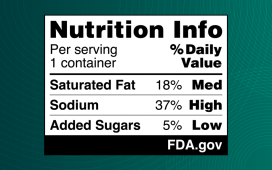FAR was one of only two markers that were significant in predicting both PE and PE with severe features
By Elana Gotkine HealthDay Reporter
THURSDAY, Oct. 24, 2024 (HealthDay News) — The fibrinogen-to-albumin ratio (FAR) is an independent risk factor for development of any preeclampsia (PE) and PE with severe features (sPE), according to a study presented at the annual meeting of the American Society of Anesthesiologists, held from Oct. 18 to 22 in Philadelphia.
Lucy Shang, from the Icahn School of Medicine at Mount Sinai in New York City, and colleagues examined whether serum levels of albumin (Alb), fibrinogen (Fib), and FAR are associated with PE and its severity. Data were included for 2,629 women who gave birth between 2018 and 2024: 1,819 control women, 584 with PE with mild features (mPE), and 226 with sPE.
The researchers found no significant differences in gravidity in the three groups. Fib, FAR, hemoglobin (Hgb), alanine aminotransferase (ALT), and aspartate aminotransferase (AST) were independent risk factors for development of any PE (odds ratios, 1.20, 68.48, 0.90, 3.93, and 3.65, respectively). For sPE, only FAR was an independent risk factor (odds ratio, 18.49). FAR was one of two markers that were significant in predicting both any PE and sPE (odds ratios, 32.77 and 11.22, respectively) in multivariable logistic regression adjusting for confounders, including Hgb, ALT, AST, age, race, and gravidity, and multiple gestations. FAR had the highest area under the curve value of 0.546 compared with all other markers in a receiver operating curve analysis.
“Additional research is needed to determine the exact range of the FAR that would be considered concerning and would be helpful to incorporate into routine prenatal care as a predictive tool for early identification of preeclampsia,” Shang said in a statement.
Copyright © 2024 HealthDay. All rights reserved.








